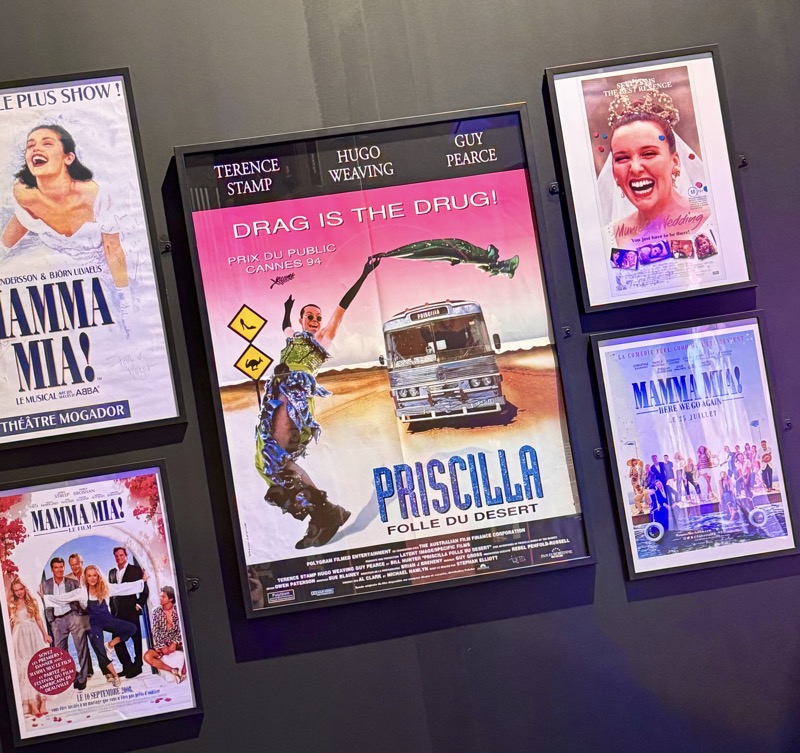We are headed to work in Brussels tomorrow and decided to go via the city of Tournai and the Battlefields of Waterloo. Tournai is a cool little town of about 70,000 people, and it lies in the westernmost reaches of Wallonia, (a province of Belgium which rests right against the French border). It is actually far closer to the French cities of Lille and Roubaix, than it is any other major Belgian city and the primary language spoken in Tournai is French.
Tournai also has the distinction of being the oldest city in Belgium, alongside Tongeren. Surprisingly, its heritage stretches as far back as the 1stC BC. For much of its history, the city of Tournai belonged to France, from the Merovingian kings to the Hundred Years War.
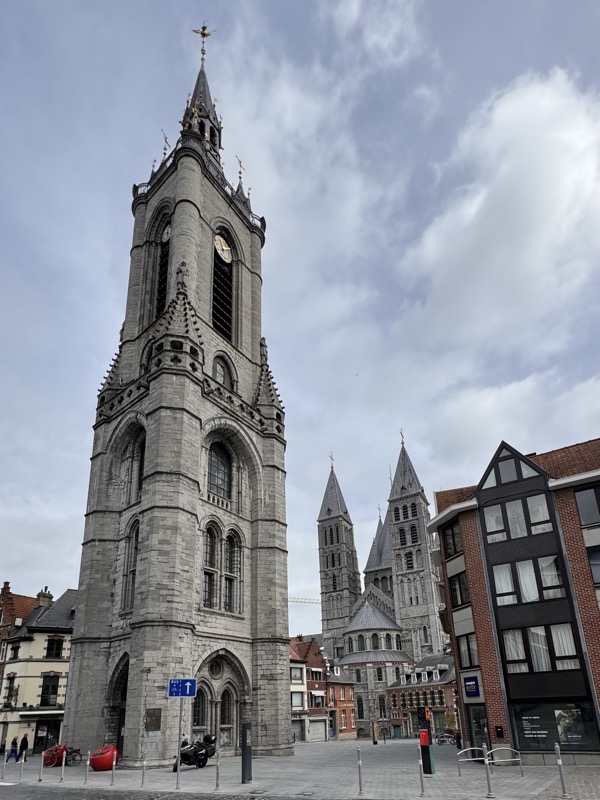
Clovis I, who created France(TM) originated from Tournai and made Tournai as his capital city. Having said that, Tournai’s glory days were in the late Middle Ages when it prospered as a centre for culture and trade.
The Grand Place is the central square (or in this case, triangle) of the town. It is surrounded by gorgeous old buildings that housed the many guilds and merchants of medieval Tournai.
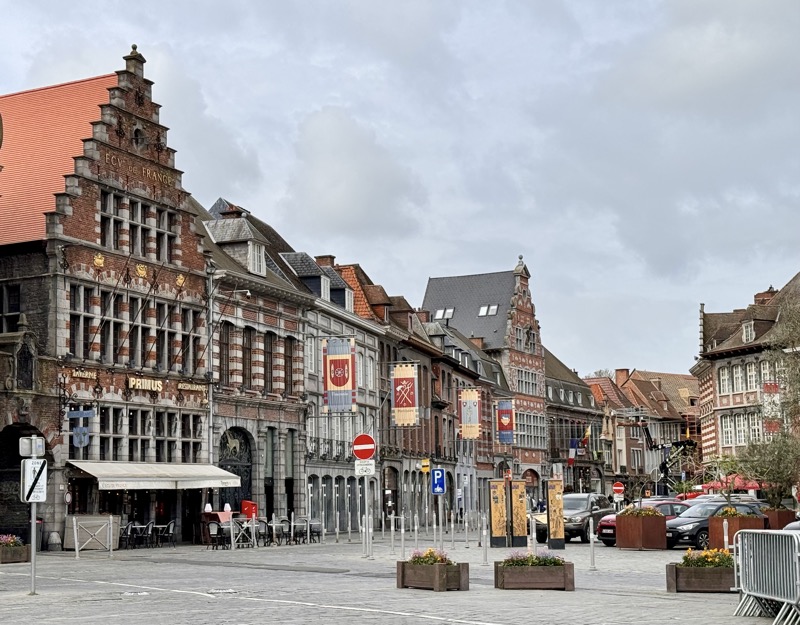
Christine de Lalaing, a governess who rose up and led the people in the defence of the city, against Parma in 1581.
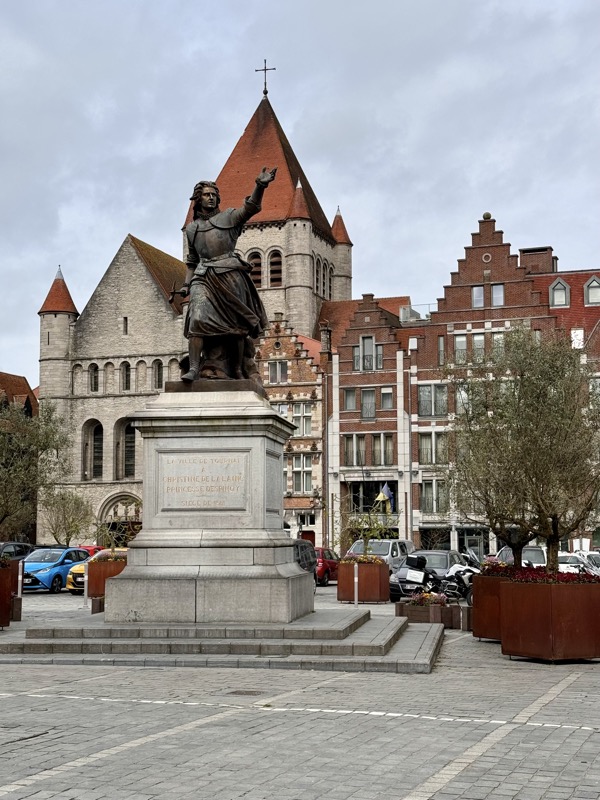
The Notre Dame Cathedral of Tournai is a UNESCO World Heritage listed building, constructed in a high Gothic architectural style. Like many cathedrals that were built and expanded upon in the 12thC-14C, it was built on top of early Roman church ruins.
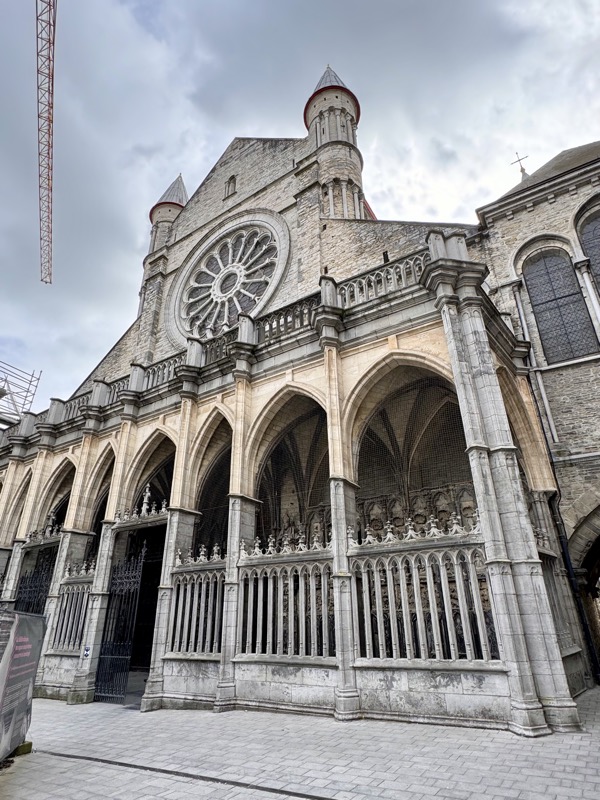
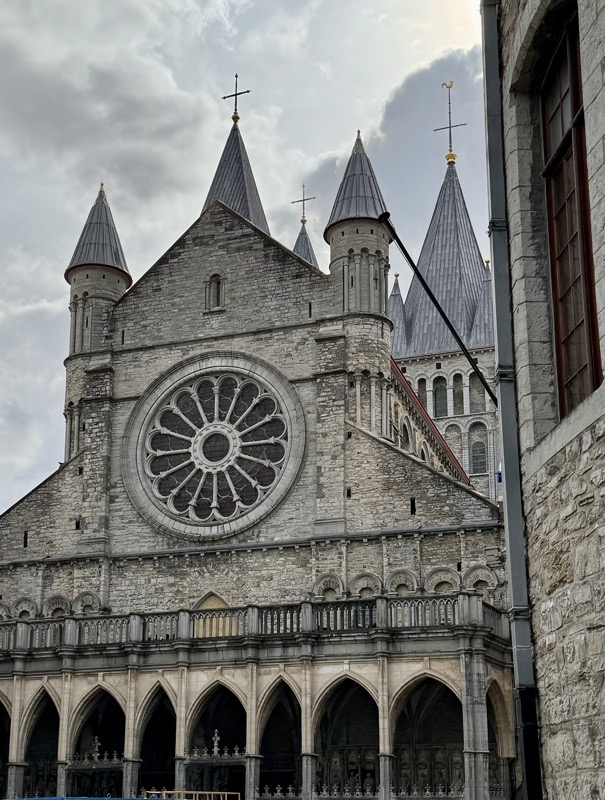
The building has seen much better days – I think being in such an obscure little town, it has been left to decay over many centuries. There are renovation efforts underway at the moment, and it looks like they’ve been at it for well over a decade – but there are some things that are going to be near impossible to ever restore to their former glory.
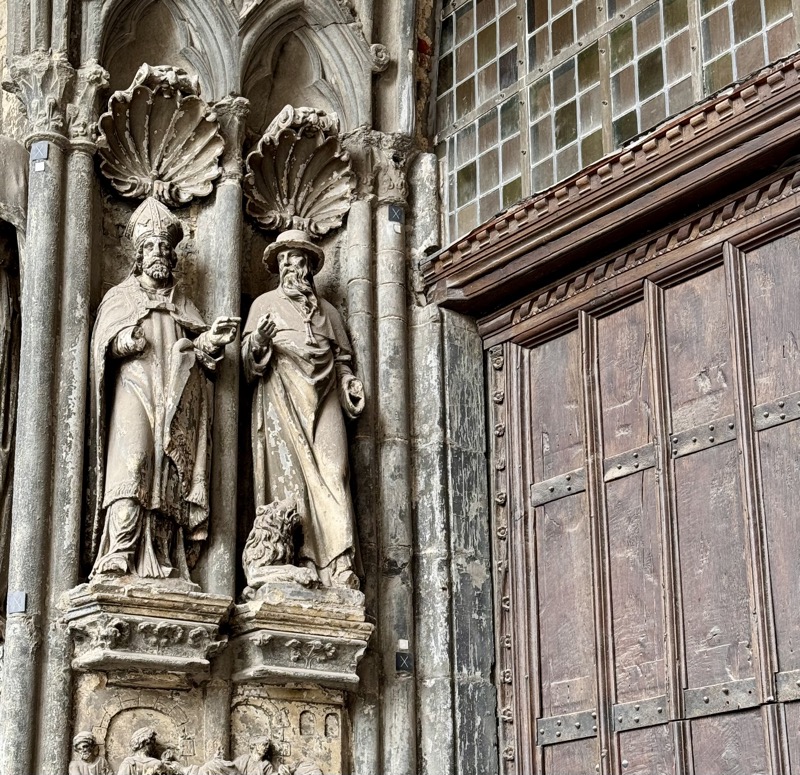
Inside, we arrived just after a morning service. Many parishioners were just leaving the church and we noticed there were gas heaters throughout to keep them comfortable – it is about 14-15 degrees Celsius outside, but I swear a good 7-8 colder than that inside.
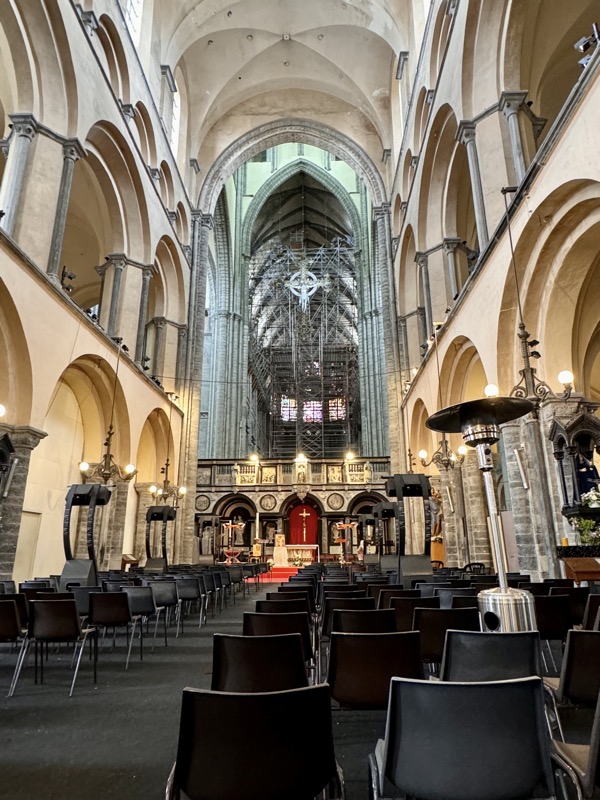
An interesting model, showing the cathedral’s five famous spires.
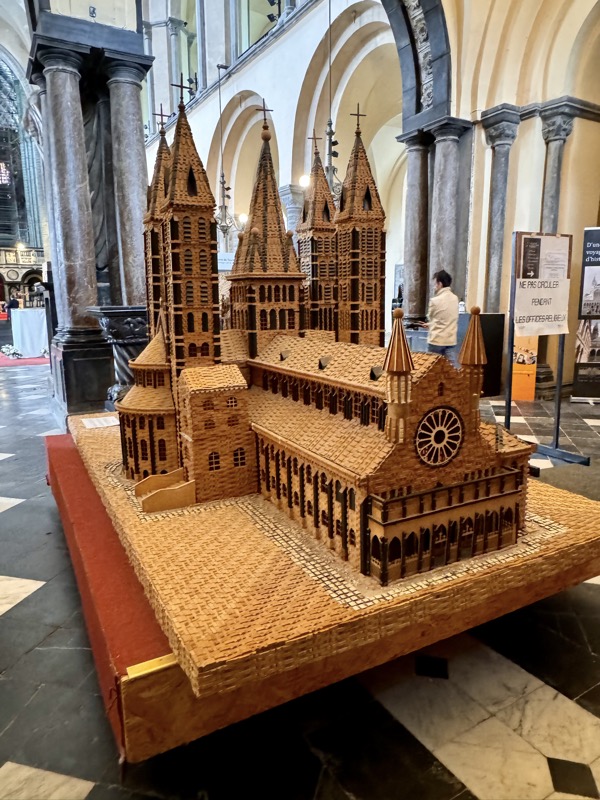
This gorgeous pulpit looked like like it could have been carved from a single piece of timber, but there is no information plaques in this church, except for those that were giving a small bit of information about the Roman crypts being worked on at the moment .
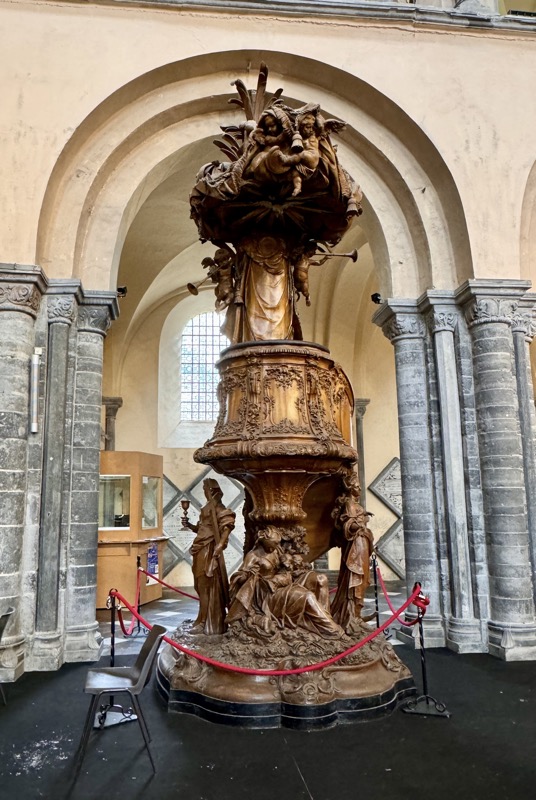
The church also contains a beautiful organ in front of this stunning stained glass rose window. All up, well worth popping in to have a look at, especially as we had the place almost entirely to ourselves one the congregants left.
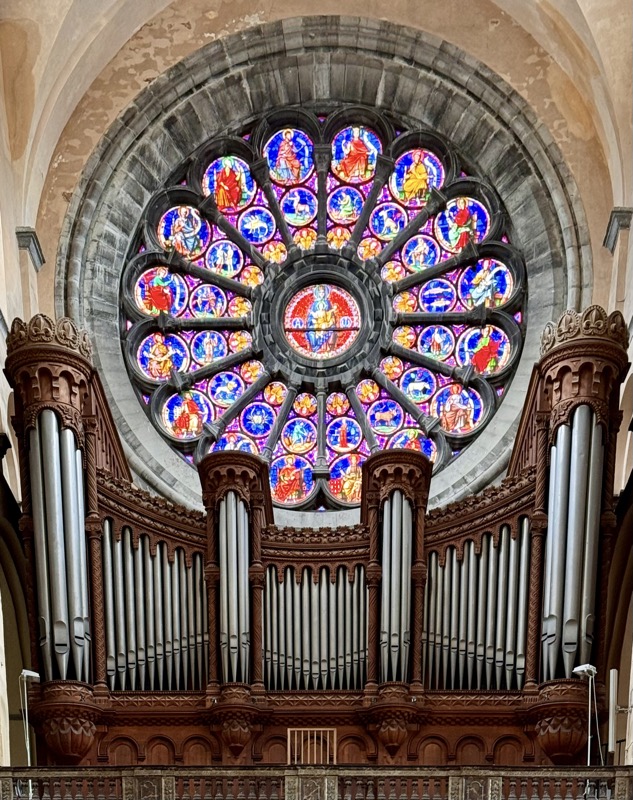
Outside in a footpath, I found this pilgrim’s mark… I’ll have to keep an eye out to see if there are more in town.
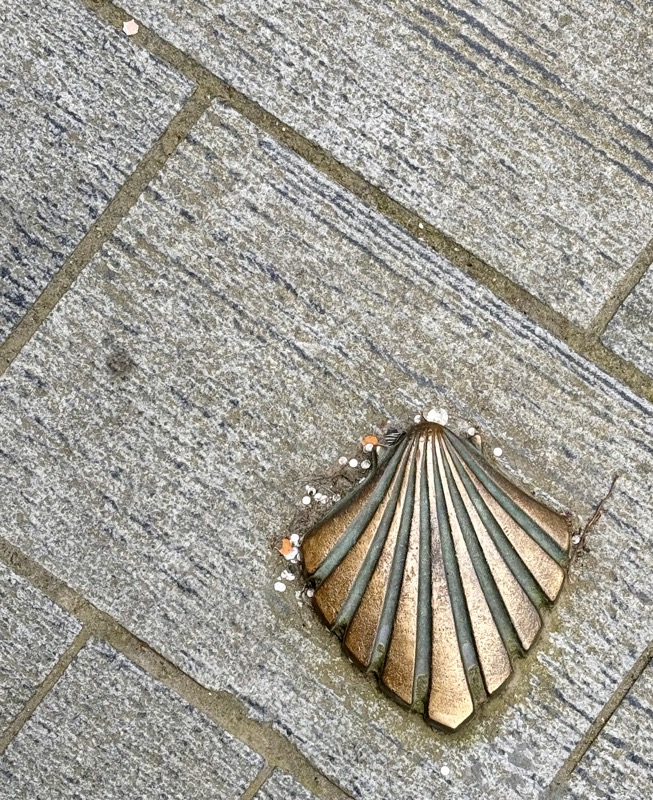
The Belfry at the centre of the Square… you can normally go up the belfry, but not today as the visitor entrance was closed by midday.
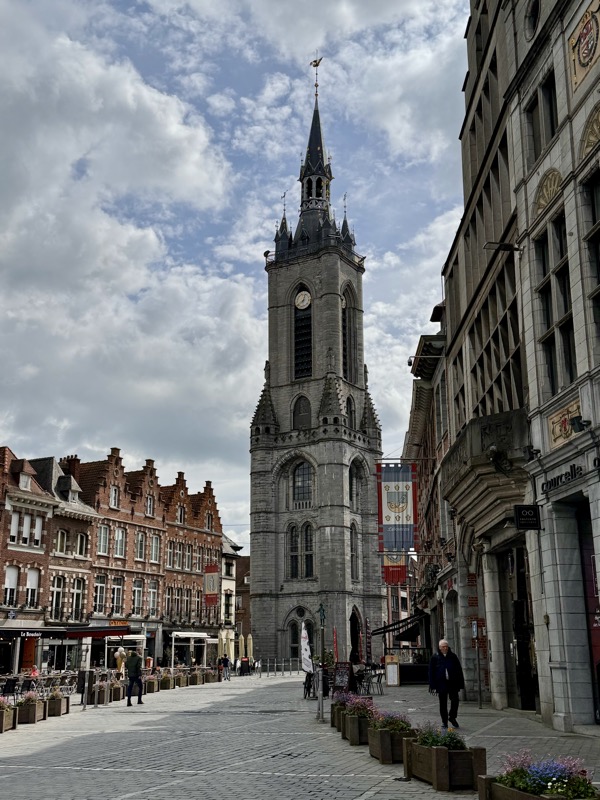
We found a local place to stop for lunch – have to keep my driver watered. I managed to dazzle the serveurse with my spectacularly bad French! But it was adequate enough to ascertain that yes, the kitchen was open, and to order us some drinks and meals, so … mission accomplished, I guess.

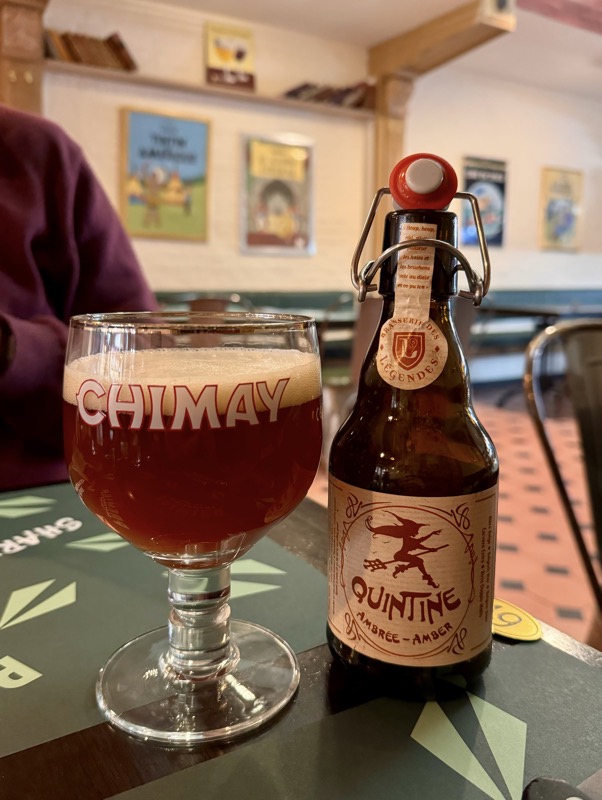
The Parc du Jardin de la Reine… freshly green as the spring brings fresh foliage .
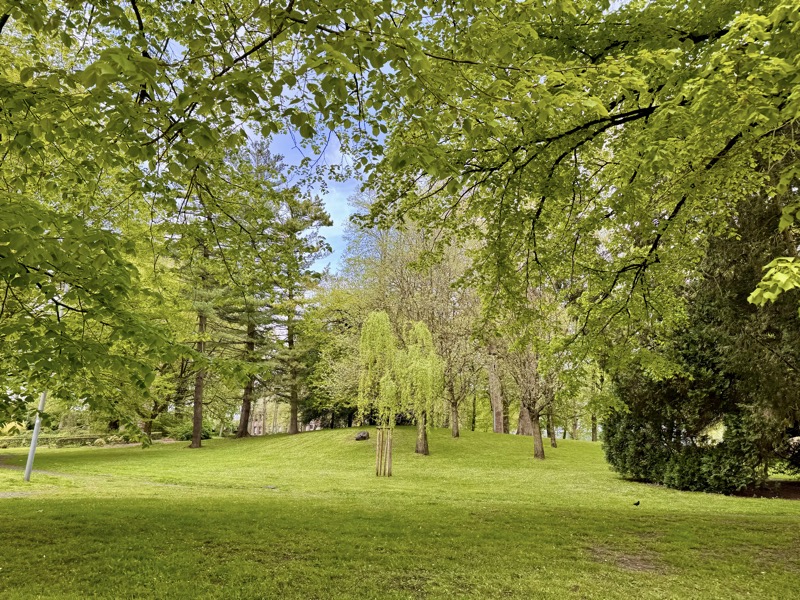
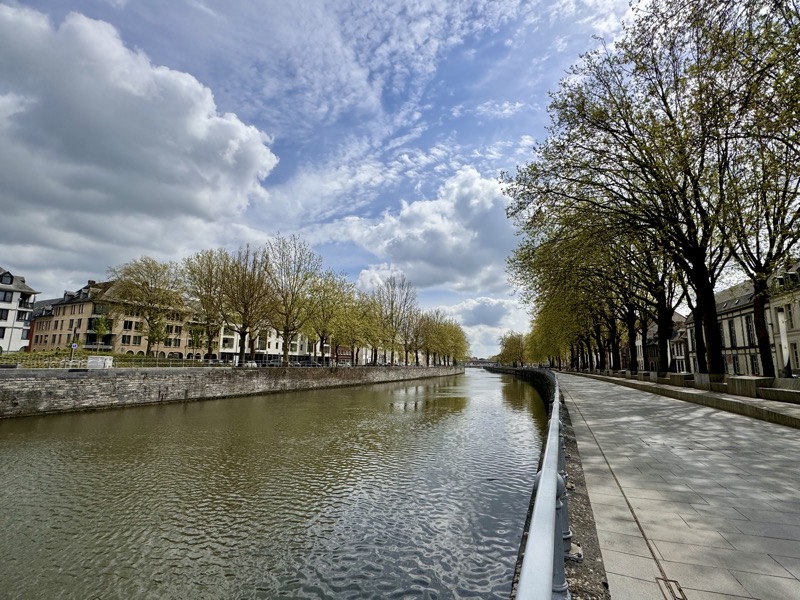
Across from the Parc is the beautiful Pont des Trous – or Bridge of Holes. It is a medieval bridge built in the late 13thC over the River Scheldt and is a typical example of medieval military architecture from that period. I had seen images of it before – and was expecting darkened stones, all covered in moss – seems the town has cleaned it up and I fear it’s lost a lot of its character!
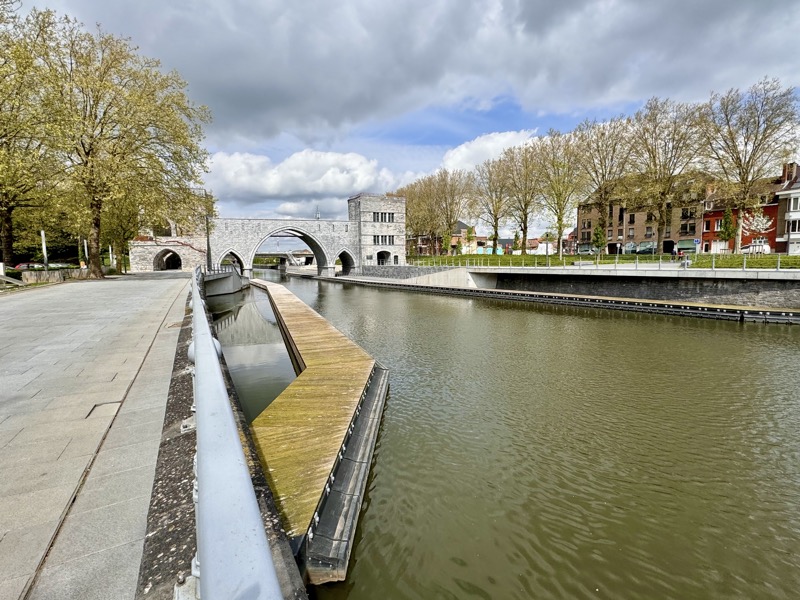
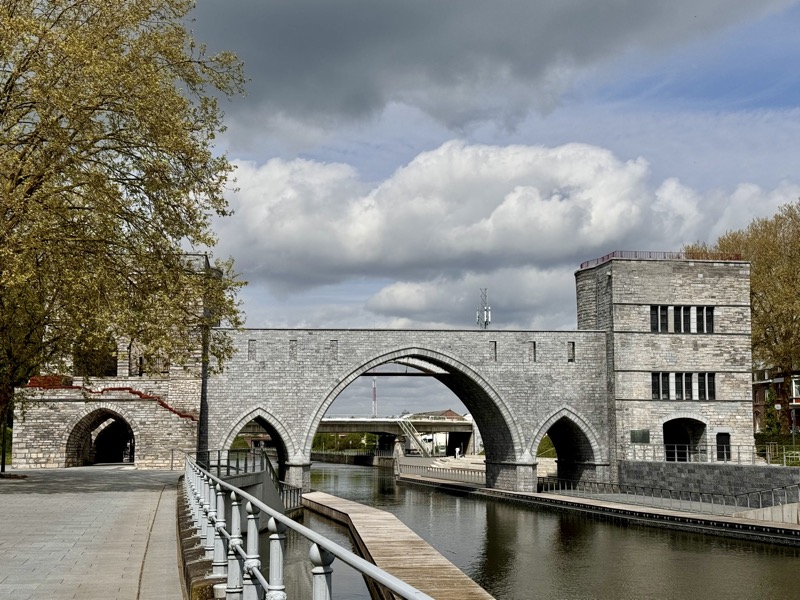
After heading out of Tournai, we drove the 20-odd kms to get to the Waterloo Battlefields. The Domaine of the Battlefields covers
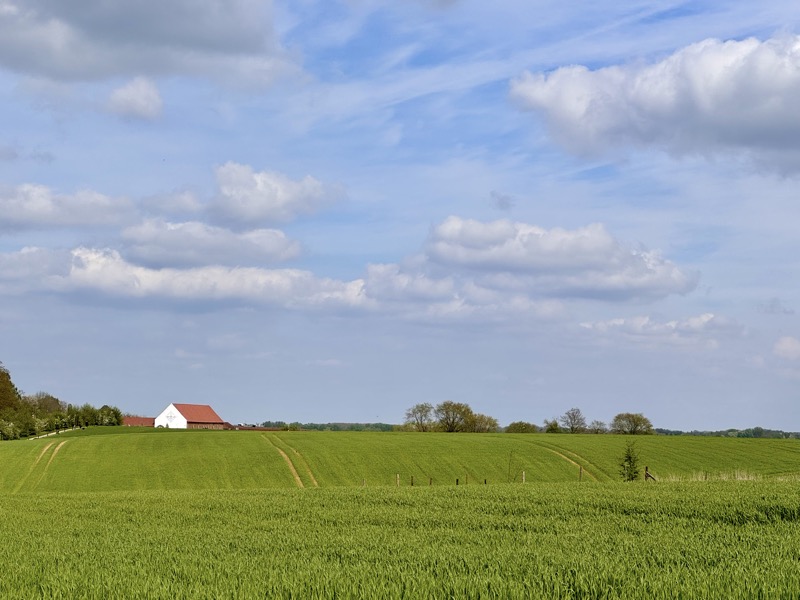
The Lion’s Mound is a monument that stands 40 metres high and was erected between 1824 and 1826 by William I, King of the Netherlands, to commemorate the spot where Prince William of Orange, heir to his throne, is thought to have been wounded while he served as Commander in Chief to the first Corps of Wellington’s army.
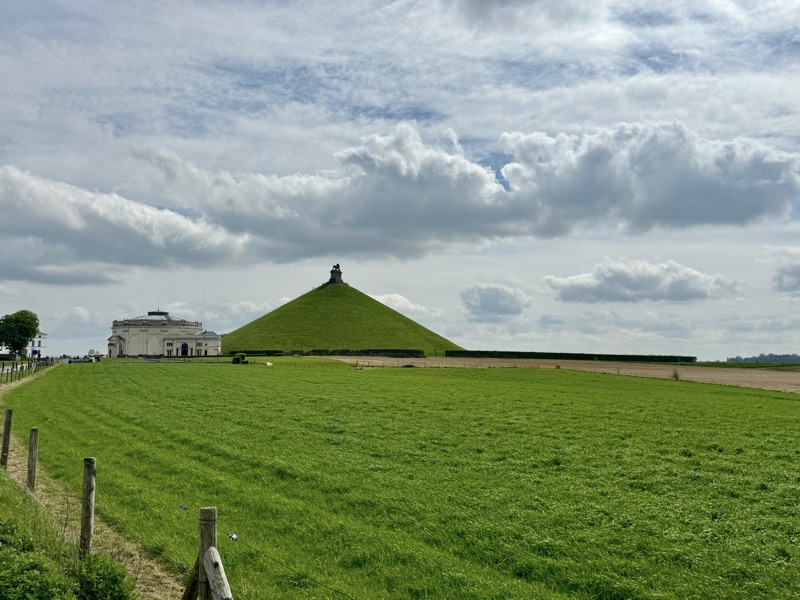
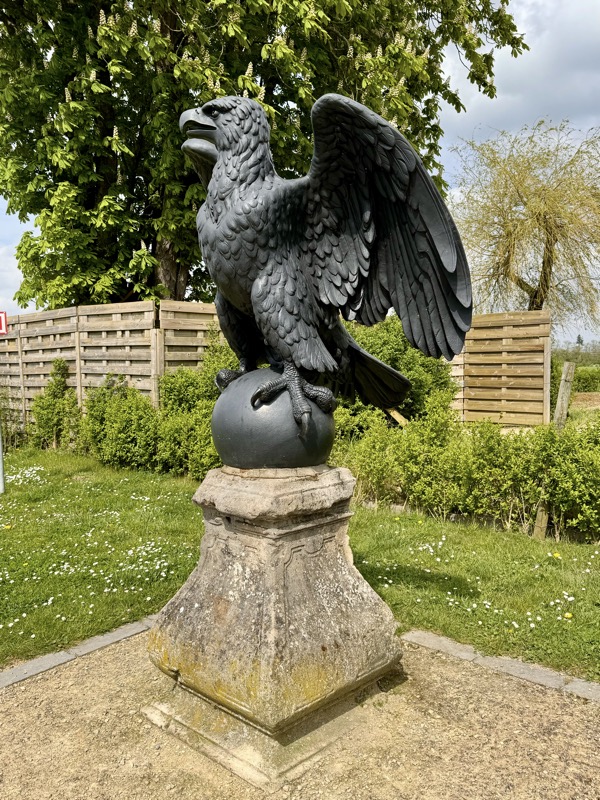
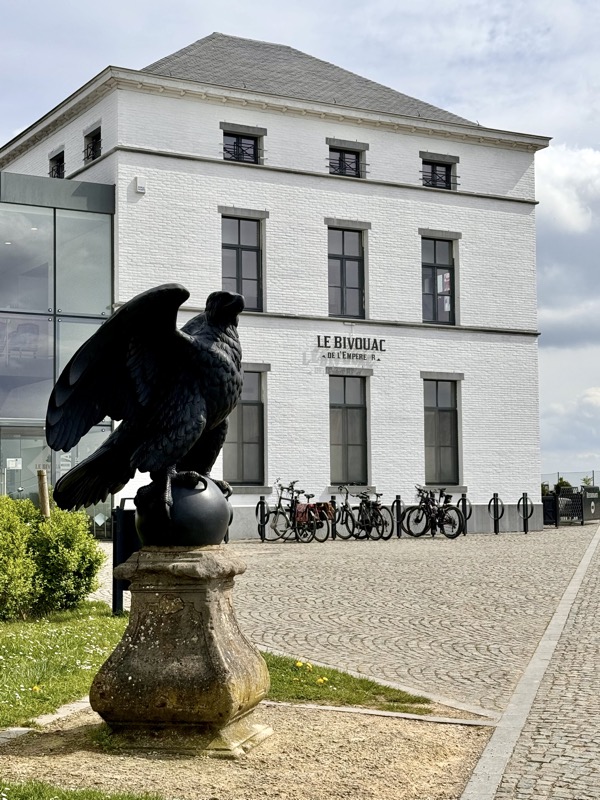
The Panorama is a vast, circular building that contains a huge canvas painted in 1912 by Louis Dumoulin, a renowned professional painter whose ‘Panorama du Tour du Monde’ (voyage around the world) was originally presented at the Universal Exhibition in Paris in 1900, before being housed here.
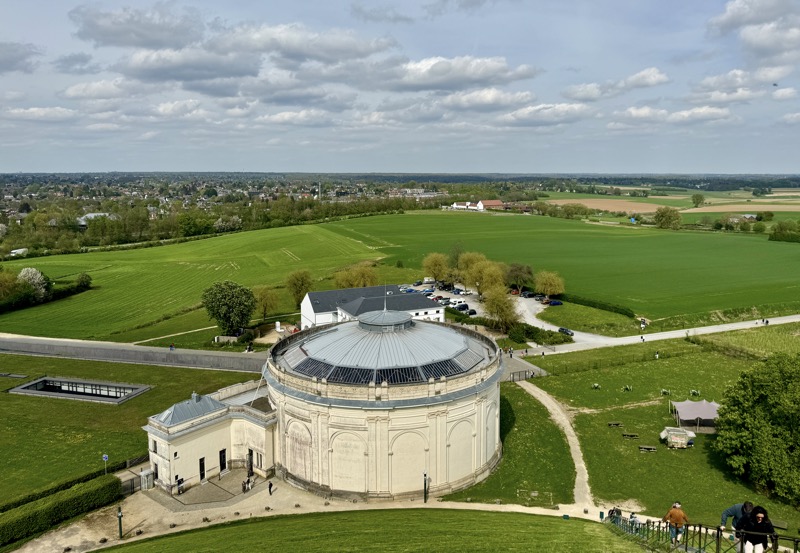
There is a stairway with 226 steps that lead to the top of the Mound, from where the entire battlefield domaine can be see. The lion is protecting a globe, representing the earth and symbolising the return of peace to Europe. Weirdly, it is designed such that you can’t actually see the lion once you are up there.
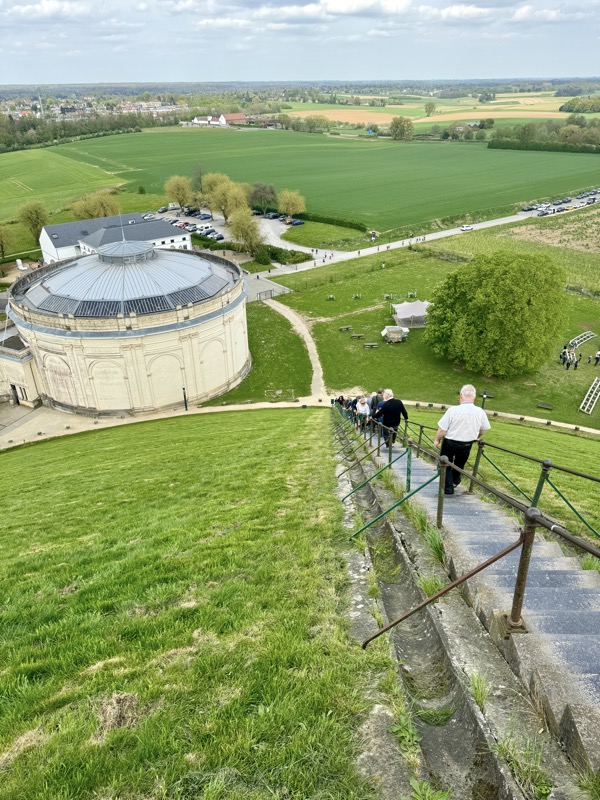
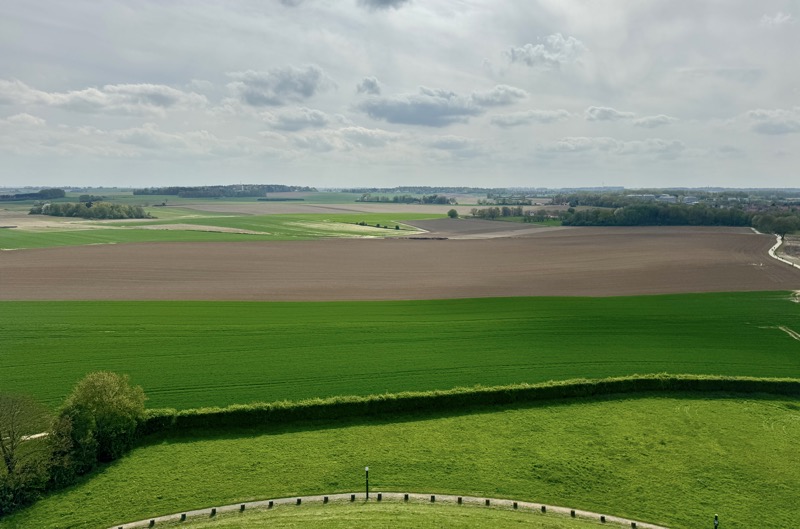
The panorama has seen better days…
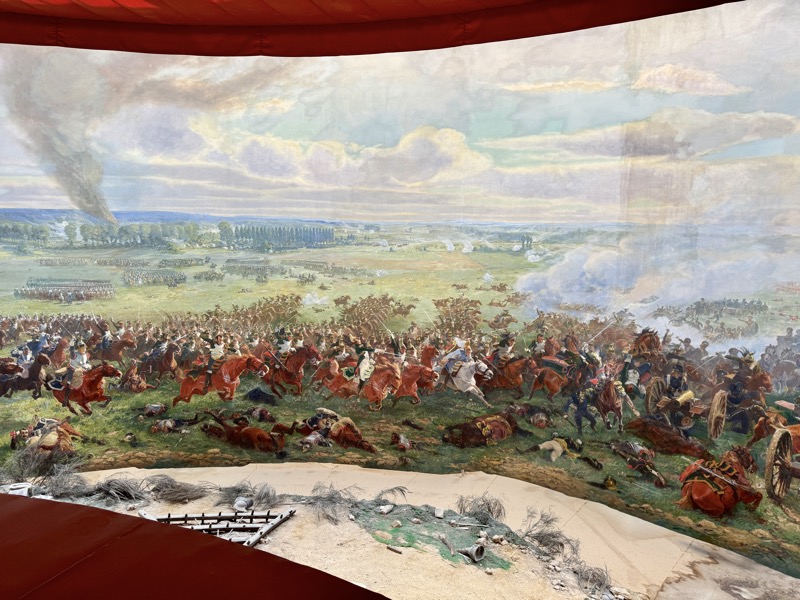
From the top, you can see the entire Battlefield, and markers show were the British, French and Prussian troops were positioned.
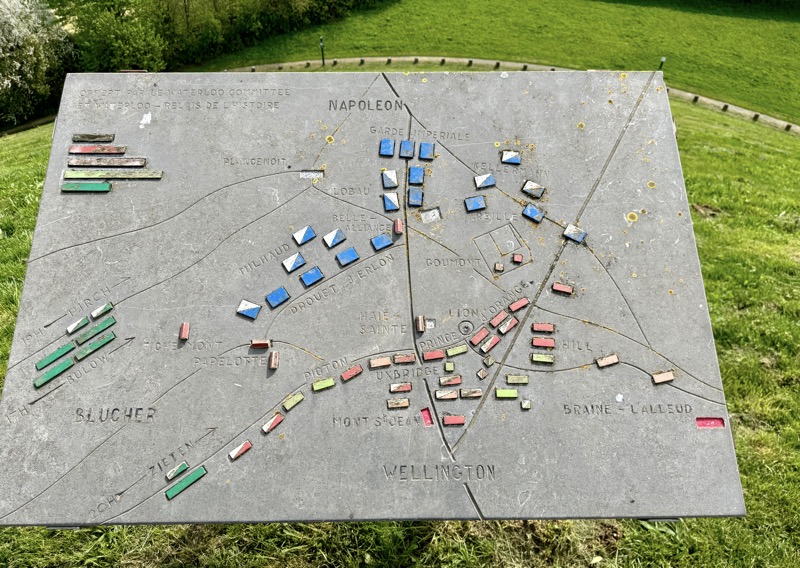
There is a very large 2000sqm underground museum, that has been built into the landscape in such a way as to not disturb the important lay of the land above where thousands of soldiers fought and died. This model was created by a civilian who spent 30 years faithfully creating a representation of the battlefield and troop placements.
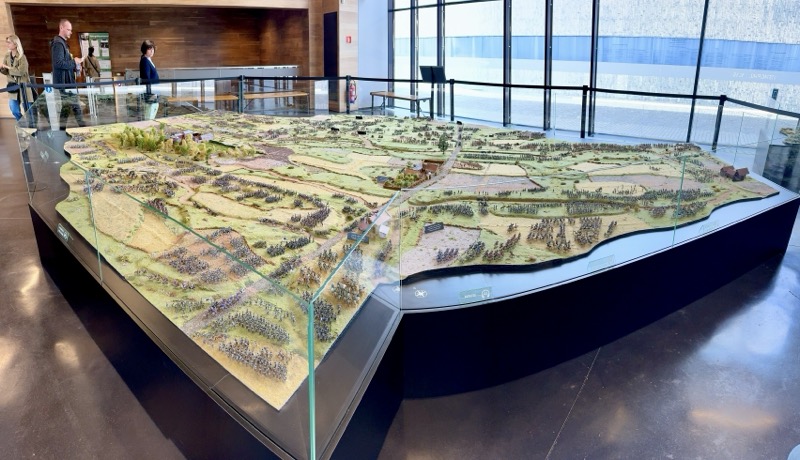
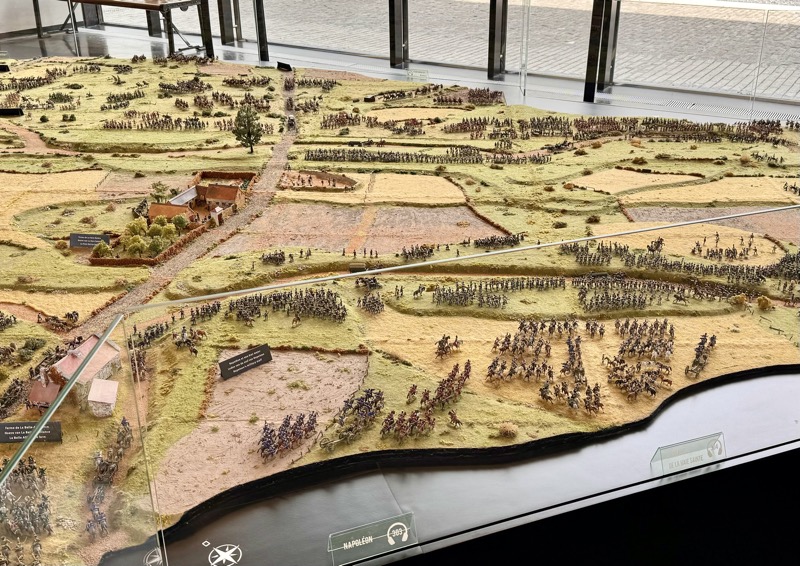
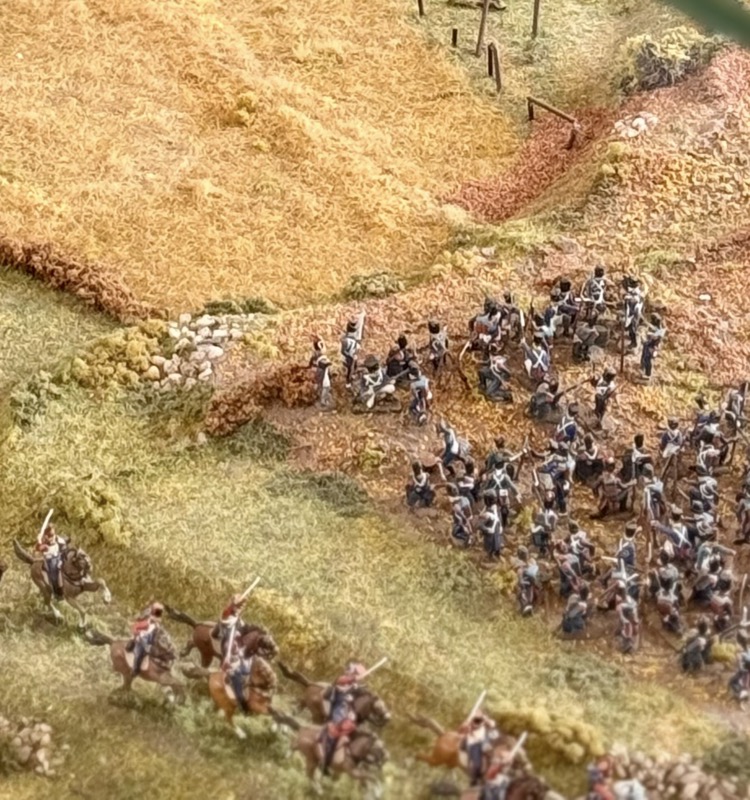
Inside the museum were many multimedia displays designed to acquaint newcomers (?) to the major players in the political landscape at the time.
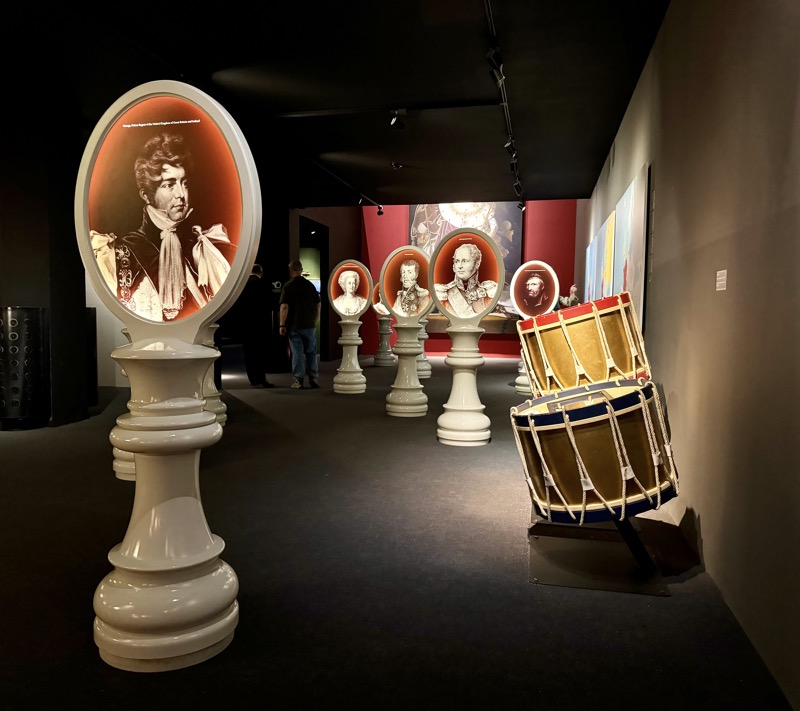
Of course – Mr Napoleon was quite prevalent.
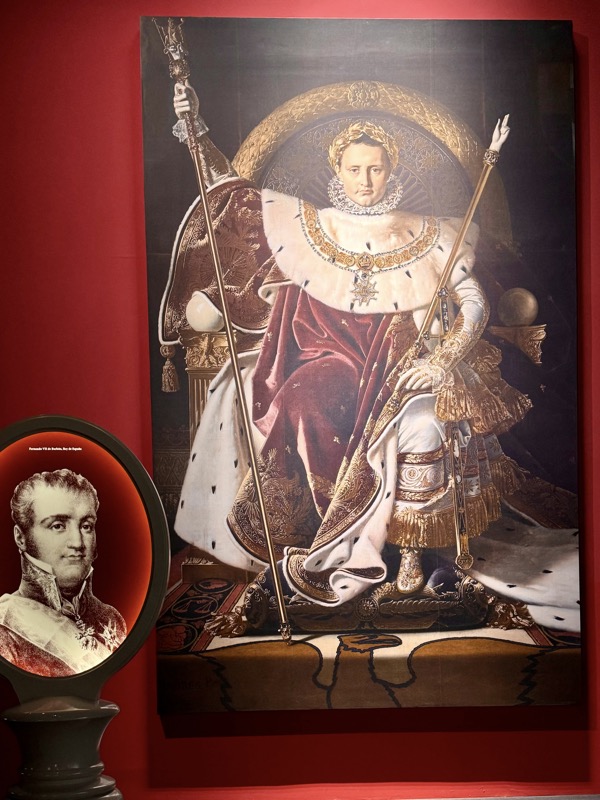
There were also displays of pistols, rifles and sabres from the period. I am reminded of Becky Sharp sending her husband off to Waterloo, and him dressed in his least-best uniform with his second best pistol, so she could sell his more costly things if something should happen to him.
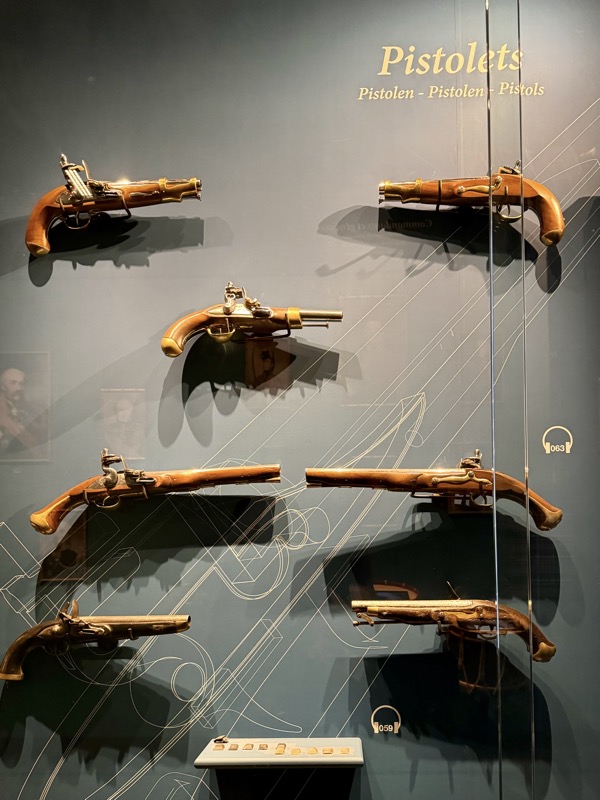
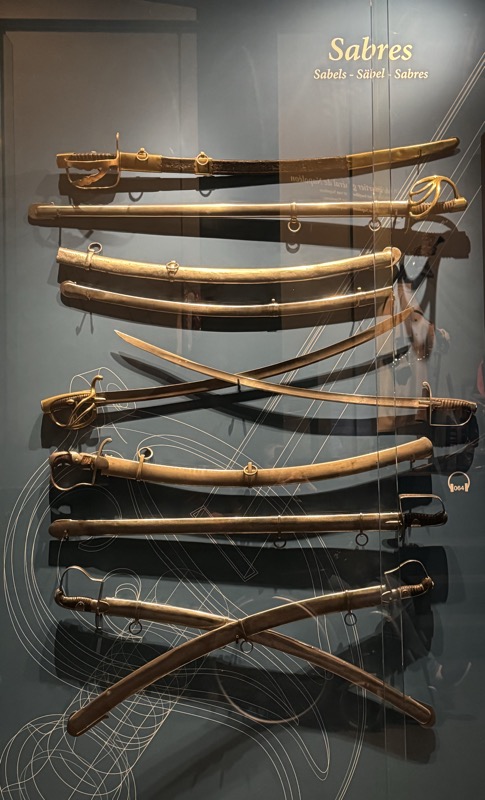
Of course, a museum around the Imperial French couldn’t be complete with out a discussion on the revolution and the guillotine’s part in that.
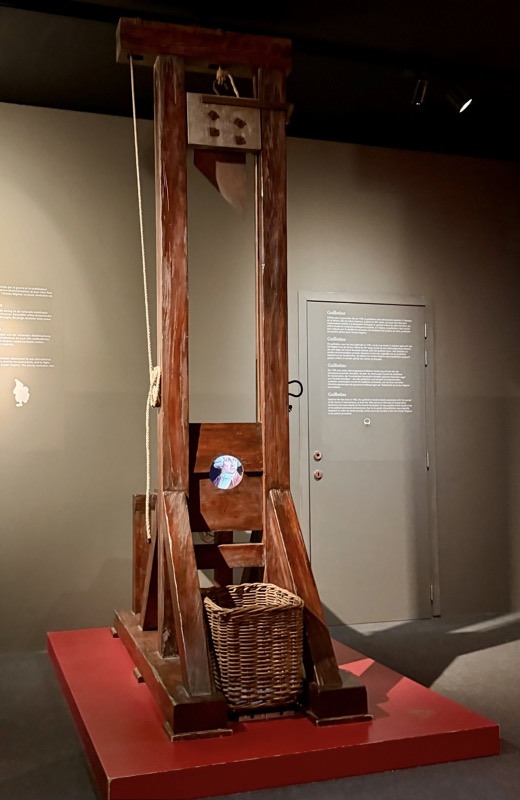
There is so much written on Waterloo – documentaries, novels, TV shows, movies… I’m not going to re-hash it all here, when Wikipedia has everything anyone might want in a neat TL;DR.
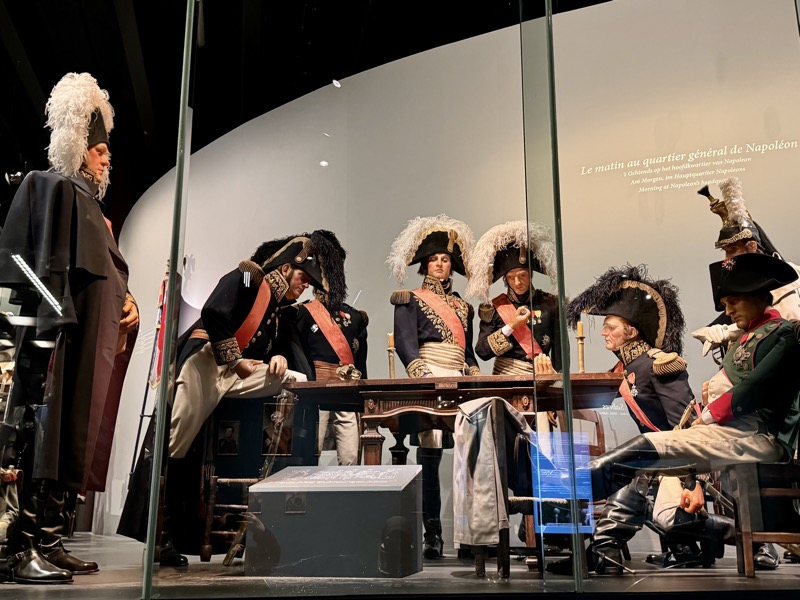
This era of history just doesn’t interest me as much as the medieval period… Sean Bean would be disappointed, but there it is.
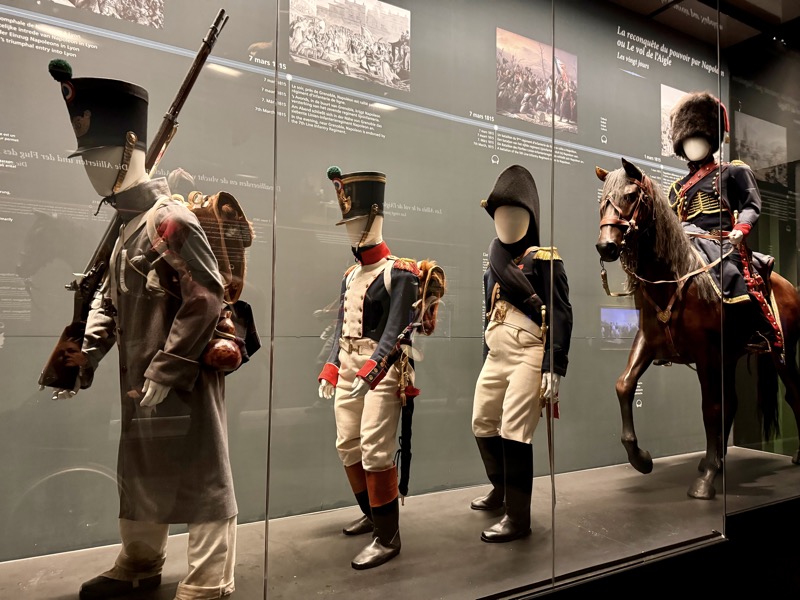
Some cool political cartoons…
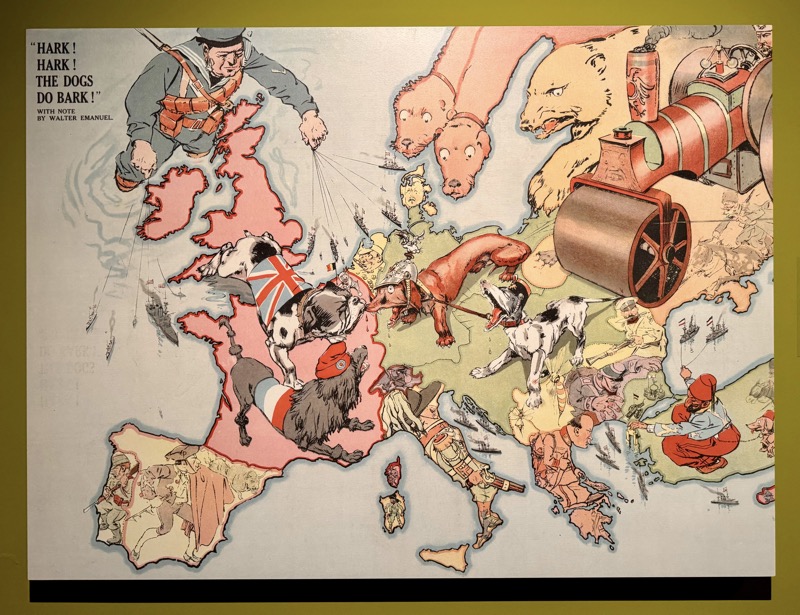
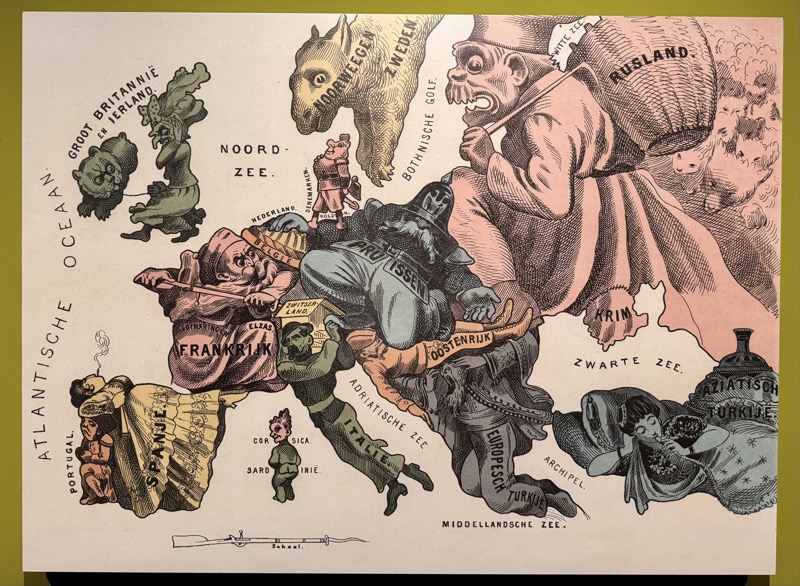
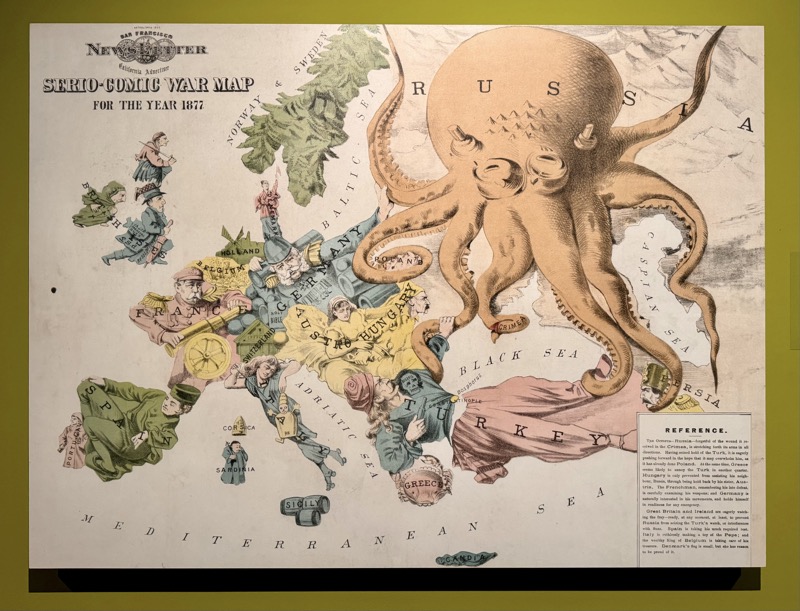
And then suddenly … there was this.
*blink blink*
An unexpected temporary exhibition of ‘50 Years of ABBA from Waterloo to the World’. Interesting long bow drawn there, but… okay. Whatever. *shrug*
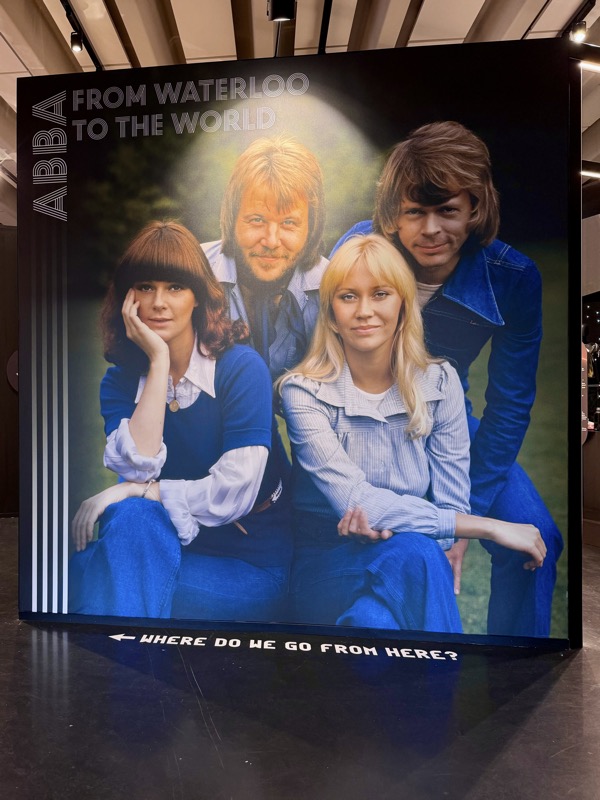
These look like some of the same costumes that I saw at the ABBA Museum in Stockholm – I wonder if they’re on loan or they just made some more… we’d never know!
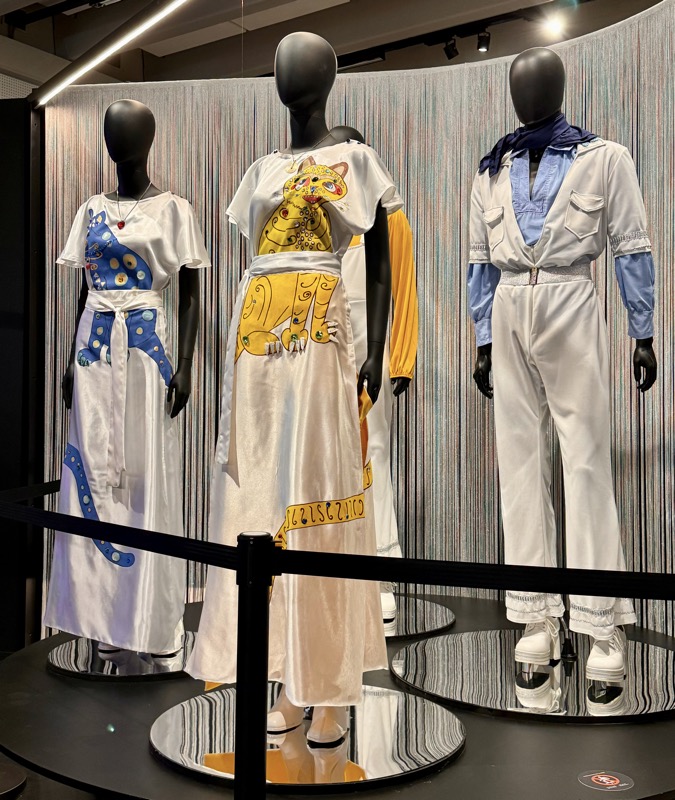
Poor Agnetha – not looking too good here. :/

Much memories, so cool.
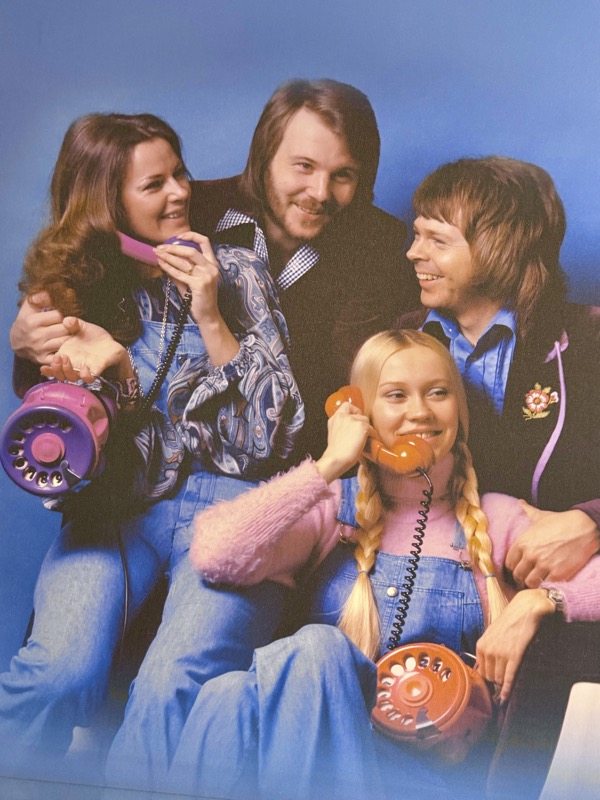
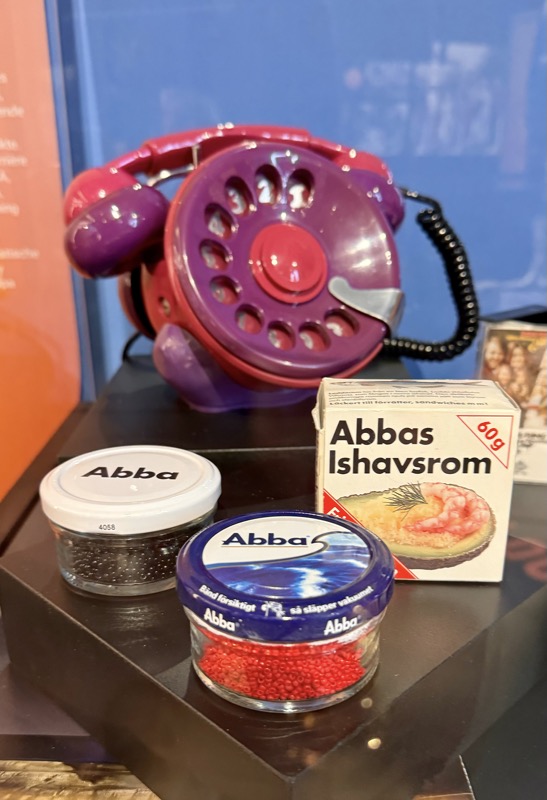
Woo-hoo! Back in the late 70s, we thought those little knitted caps were all the rage. Image the complete lack of stage presence an old ABBA video would feel like it has these days.
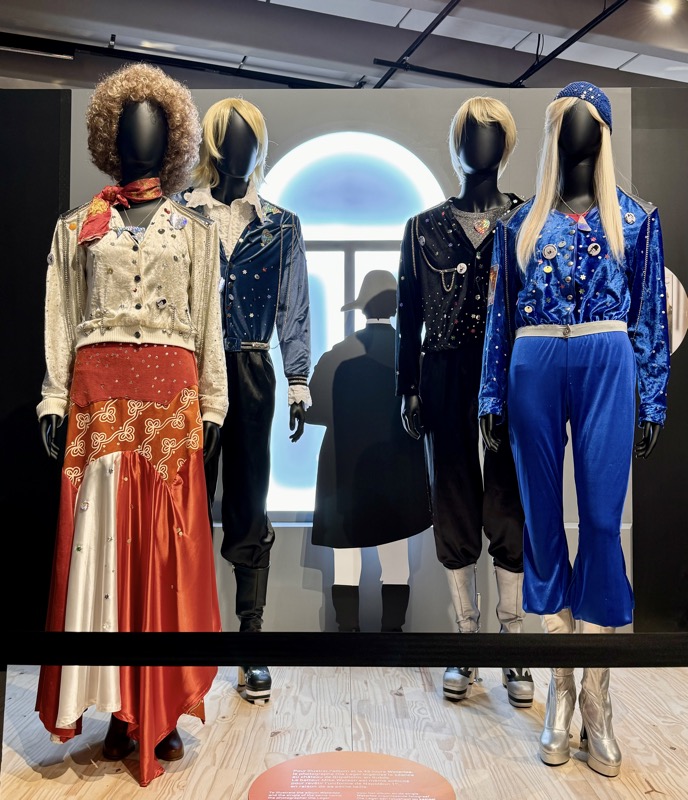
I still don’t know why they were so huge in Australia… but it is kinda like the P!nk phenomena. Huge down under, way bigger than in Europe or the US. There must be something distinctly Australian that these two diverse performers have tapped into.
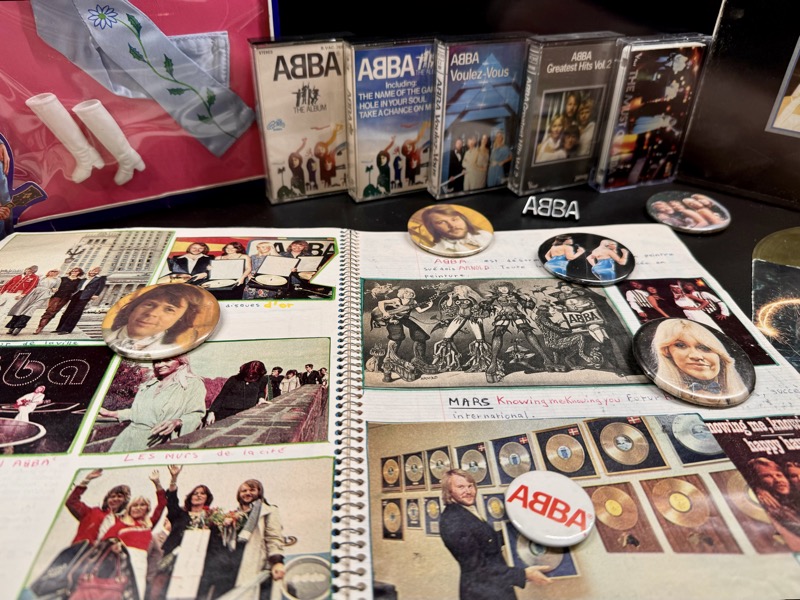
More tacky outfits.
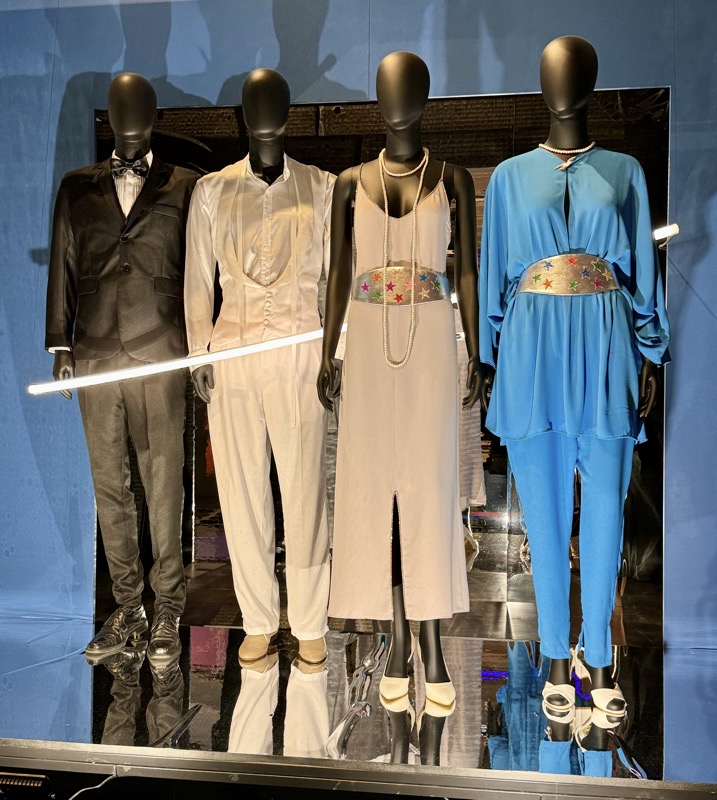
And a section on the huge revival in the late 80s, early 90s with the use of so many fabulous ABBA tunes in movies and musicals for the stage. Fun… completely out of place here, but fun.
